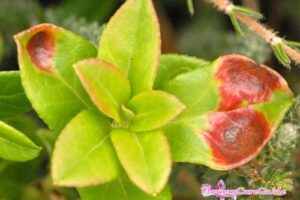Ruffle Fern, also called fluffy ruffle ferns due to their appearance, are a new variety of ferns that are produced by the selective breeding of Boston ferns. Boston ferns belong to the species of Nephrolepis exaltata. A fully matured ruffle fern plant’s leaves, which resemble fronds, reach up to the length of three feet. The plant comes in more than one variety. One variety is ‘Florida Ruffle’, which is a medium-sized plant and has feathery leaves with a dense canopy. Another variety is ‘Fluffy Ruffles’, which is a smaller plant and has upright fronds.
Ruffle ferns are beautiful indoor plants that can also thrive in low light. They enliven the place wherever you keep them, whether in a pot or in a hanging basket. Here is a simple guide on fluffy ruffle fern care that will help you to grow it in your homes.
Best soil and pot for Fluffy Ruffle Fern
The best soil for the fluffy fern is the one that has equal quantities of garden soil, sand or perlite, and peat moss or sphagnum. The size of the pot for the ruffle fern should be appropriate to the size of the plant. A small pot would restrict the growth of the plant, while a larger pot would have so much extra soil that it would contain moisture in excess, which can cause the fluffy ruffle fern to rot. Like many other plants, ruffle ferns also get rotten when planted in poorly drained soggy soil.
Provide the right amount of light
One of the most important points to remember when it comes to fluffy ruffle fern indoor care is that they do not need bright or direct sunlight to grow. Ruffle ferns best thrive in indirect sunlight filtered from thin curtains or colored glass. You can place the ruffle fern beside the window so that they can receive filtered sunlight from the curtains or you can also place them in direct sun, but only in the early morning when the rays are mild.
Water the ruffle fern appropriately
The soil for ruffle ferns should neither be much soggy nor bone dry. So only water the ferns when the topsoil of the pot appears dry to you. Water the ferns until it starts to drop from the drainage hole. The ruffle ferns belong to the tropical region and cannot grow well with cold water. Make sure you’re giving it the water that has room temperature.
How to use fertilizer in fluffy ruffle ferns
A complete guide on how to care for fluffy ruffle fern also tells us about the use of fertilizers in the right amount. Ruffle ferns do not require feeding too much and an excess amount of fertilizer damages the plant. They need a light amount of fertilizer between April to September, and only one time during the winter season. A regular houseplant fertilizer can be useful for your ruffle fern, but make sure you dilute it to half of its concentration that is needed by the plant. You can also mix organic fish emulsion fertilizer with regular houseplant fertilizer and water in the ratio of 2:3:1 or 2:2:1 for its speedy growth.
Give the fern fresh air
Do not place the fluffy ruffle ferns in tight places, like corners, and in a room where there’s no window. Ruffle ferns best thrive in the fresh air, so place them near the window or on the balcony if sun rays do not reach there. Avoid hanging the plant near the ceiling because it remains warm and dry most of the time. Also, place them alone in free space and do not mix with other plants.
Wipe the dust from the fronds
The dust particles sitting on the fronds of the plant create hindrance in its photosynthesis process. As a result, the plant does not grow at its natural pace. To avoid this situation, wipe the dust off of the fronds time-to-time with a water spray while holding it over the sink or bathtub. Remember to use lukewarm water at the time of cleaning.
Propagating ruffle fernPeople who are looking for how to propagate fluffy ruffle fern can follow these instructions. Ruffle ferns are easy to propagate and do not take much time. To multiply these ferns, cut the base of the plant with a sharp knife and place it in the soil. The offset does not require having roots, as the root will emerge itself after a few days of keeping it in the soil. The shoot should be planted in sterile soil in a pot that has a proper drainage system. Water is necessary for a shoot when it is recently placed in the soil. Maintain the moisture level in the soil and keep it covered with plastic in the indirect sunlight to maintain the temperature between 16⁰ C and 21⁰ C. Remove the plastic cover when the shoot starts to show some growth, but keep the soil slightly moist.



